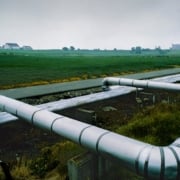U.S. EPA Proposes Revisions to Project Emissions Accounting Under New Source Review
The U.S. Environmental Protection Agency (EPA) is proposing revisions to the New Source Review (NSR) permitting program that would make it more difficult to net out of NSR requirements by changing how to calculate the net emissions resulting from a facility modification. EPA also proposes to define the term “project” more narrowly to prevent sources from aggregating changes to net out of major NSR requirements. The proposal would revise reforms adopted only four years earlier during the Trump administration that had provided additional flexibility to sources making changes to their operations.
Under the Clean Air Act, an existing major source triggers NSR review when there is (A) a physical change or change in the method of operation and (B) a significant net increase in emissions. For the second part of this analysis, the EPA historically followed a two-step process: (1) A source would assess whether a proposed project itself was projected to cause a significant emission increase of a regulated NSR pollutant; if so, then (2) the source would determine whether there would be a significant net emissions increase in that pollutant, considering contemporaneous emissions increases and decreases. However, in 2020, EPA issued a rule clarifying that both emissions increases and decreases from a proposed physical or operational change will be considered at Step 1 when accounting for the project emissions (the “Prevention of Significant Deterioration (PSD) and Nonattainment New Source Review (NNSR): Project Emissions Accounting” rule). The consideration of decreases at Step 1 is important because if a source determines that a significant emissions increase would occur, then the source must either accept that major NSR permitting is triggered or must perform contemporaneous netting analysis (Step 2) to determine whether a significant net emissions increase would not occur.
Environmental groups petitioned for reconsideration of the 2020 rule, which EPA denied. However, EPA states that it has now reconsidered the issues raised in that petition including, most prominently, the contention that the 2020 rule allegedly fails to ensure that emission decreases — when used to show that a project will not cause a significant net emission increase — will actually occur and be maintained.
In response, EPA now proposes to require that “decreases associated with a project under the Step 1 significant emissions increase determination be legally and practicably enforceable.” EPA’s proposal therefore retains the 2020 rule process for considering projected emissions decreases in Step 1 but would add an enforceability provision for emissions decreases that a source considers in that step. Currently, NSR regulations do not include independent procedures to make the projected emissions decreases that have been accounted for federally enforceable. Under the proposed revisions, an emissions decrease would need to be “creditable” to be accounted for in Step 1. EPA is also requesting comments on whether the project emissions accounting framework allows a source to double-count emissions decreases across multiple projects, although EPA acknowledges that double-counting of emissions increases also may occur.
Second, the proposed rule also purports to limit the definition of “project” to prevent aggregation of disparate activities under a single “project.” EPA now proposes to define a “project” more narrowly to be limited to “a discrete physical change in, or change in the method of operation of, an existing major stationary source, or a discrete group of such changes (occurring contemporaneously at the same major stationary source) that are substantially related to each other. Such changes are substantially related if they are dependent on each other to be economically or technically viable.”
The proposed rule would also impose more stringent recordkeeping and reporting requirements for facilities where a project does not qualify as a major modification, yet a “reasonable possibility” exists that the project may result in a significant emissions increase.
Comments on the proposed revisions must be received by EPA on or before July 2, 2024.
This post is as of the posting date stated above. Sidley Austin LLP assumes no duty to update this post or post about any subsequent developments having a bearing on this post.


